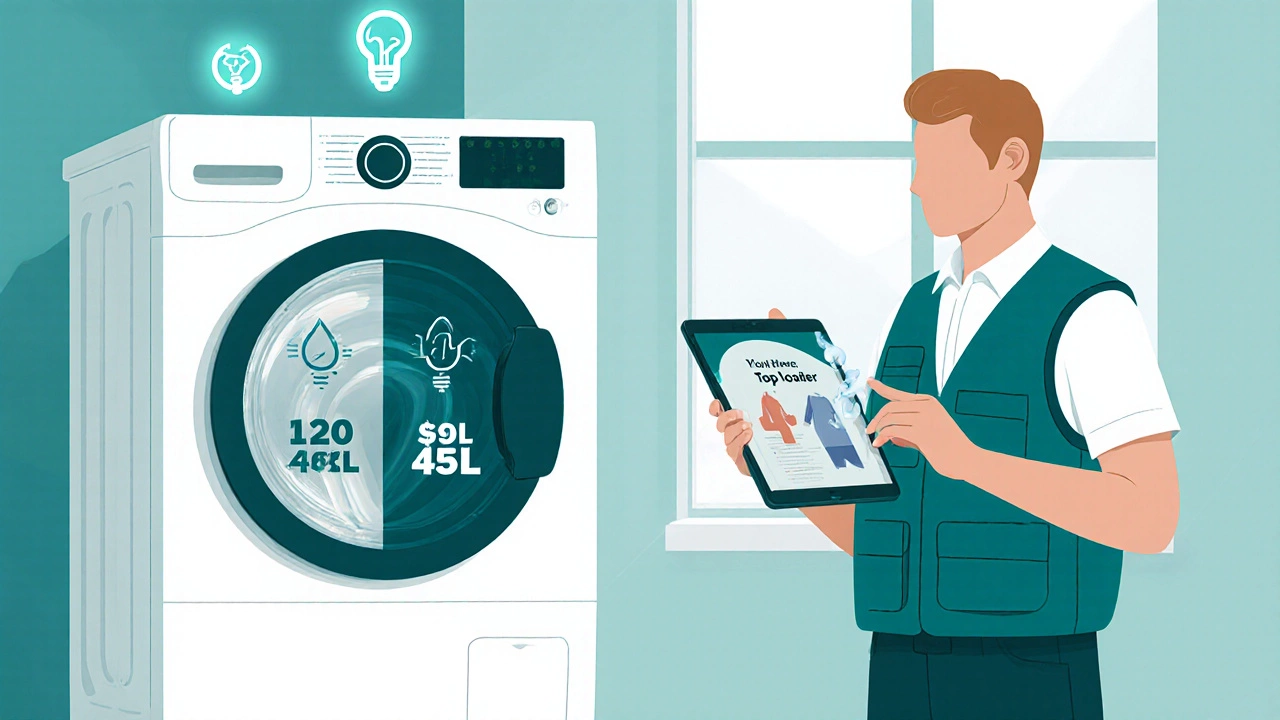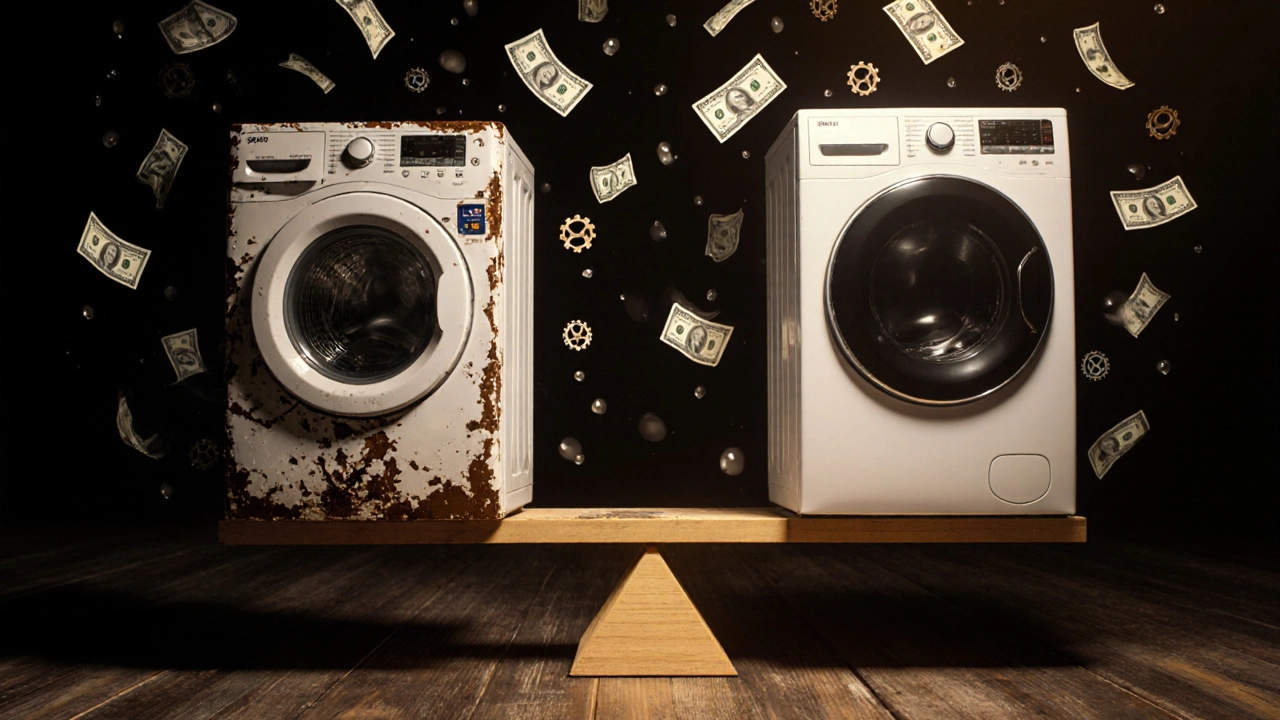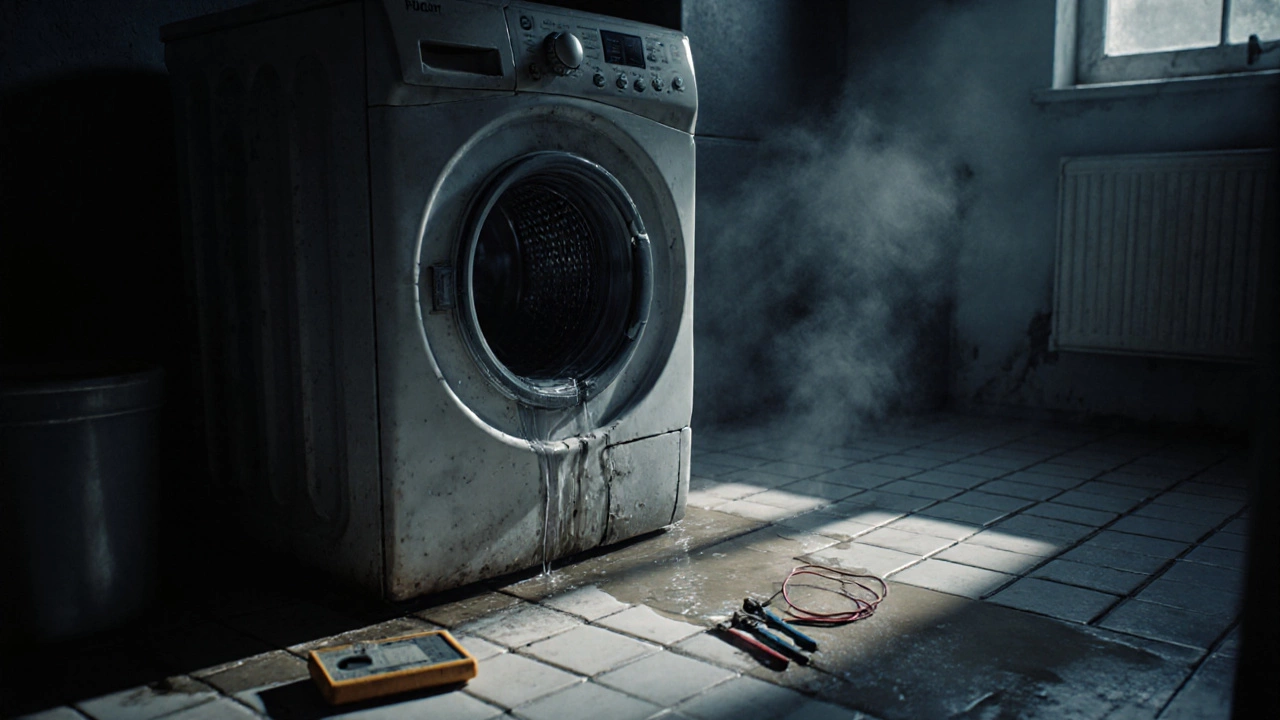Washing Machine Repair Calculator
Enter your details to see if repairing your washing machine makes sense
- Age Machines older than 8 years are less repairable
- Cost Repairs over 50% of new machine price aren't worth it
- Energy Older machines use 2-3x more water and electricity
- Warranty Most machines have only 1-2 year warranties
You hear a loud bang. The washer stops mid-cycle. Water pools on the floor. Your first thought? Repair or replace? It’s not a simple yes-or-no question. But it’s one every New Zealand household faces at least once. And the answer depends less on the brand and more on the age, the cost, and what’s actually broken.
How old is your washing machine?
If your washer is under five years old, repair is almost always the smarter move. Most machines last 10 to 12 years with normal use. If it’s still in its prime, a $150 fix to replace a worn pump or a faulty door lock makes perfect sense. But if it’s eight years or older, you’re entering the danger zone. Parts become harder to find. The motor’s wearing out. And that $200 repair? It might just be buying you another year before the next thing breaks.
Here’s a quick rule: if the repair costs more than half the price of a new machine, walk away. A new front-loader in New Zealand runs about $800 to $1,200. So if the fix is over $600, you’re better off replacing it - even if the machine still spins.
What’s actually broken?
Not all breakdowns are equal. Some fixes are cheap and common. Others are signs the machine is dying.
- Drain pump clogged or failed - This happens often. Lint, coins, socks - they all get trapped. Cleaning it out costs $50. Replacing the pump? $150-$250. Easy fix. Worth it.
- Door lock malfunction - If the machine won’t start because the door won’t lock, the switch is usually busted. Replacement: $80-$120. Simple job. Fix it.
- Worn drum bearings - That grinding noise when it spins? That’s the drum rubbing against the outer tub. This is serious. Repair cost: $300-$500. And if the bearings are gone, the drum might be damaged too. At this point, you’re spending nearly half the price of a new machine. Think twice.
- Motor failure - If the motor’s dead, you’re looking at $400-$600 just for the part. Labour adds another $150. That’s $550-$750. For a machine that’s already 8+ years old? No. Just no.
- Control board error - Error codes flashing? It might be a loose wire. Or it might be a fried circuit board. Replacing the board costs $250-$400. And there’s no guarantee it won’t happen again. High risk, high cost.
Some fixes are quick wins. Others are red flags. Know the difference.
Energy and water savings matter
Older machines use way more water and electricity. A 10-year-old top-loader might use 120 litres per wash. A new front-loader uses 40-50 litres. That’s more than half the water saved. Over a year, that’s thousands of litres. In Wellington, where water rates are rising, that adds up.
Electricity too. New machines have inverter motors that use 30-50% less power. If your old washer is guzzling juice, you’re paying more each month just to run it. Add that up over two years - you might pay for half a new machine in saved bills.
Warranty and parts availability
Most manufacturers offer 1-2 years on parts and labour. After that, you’re on your own. And here’s the ugly truth: many brands stop making parts after 7-8 years. You might find a technician willing to fix it, but they’ll have to scavenge for a used part off another machine. That’s risky. That part could fail again in six months.
Brands like LG, Samsung, and Bosch still support machines up to 10 years old in New Zealand. But cheaper brands? Once the warranty expires, good luck finding a belt or a sensor. You’ll pay more for the part - and more for the labour - because it’s harder to source.

What about second-hand machines?
Some people consider buying a used washer from a garage sale or online. Tempting, right? But here’s what most don’t say: second-hand machines are often already worn out. They’ve had 5-7 years of heavy use. You’re trading a known problem (your old machine) for an unknown one (a mystery machine).
Plus, second-hand machines rarely come with any warranty. If it breaks in three weeks, you’re out $300 and still without a washer. A new machine comes with a 12-month guarantee. That peace of mind? Priceless.
When to call a repair technician
Don’t guess. Don’t YouTube your way through it. If you’re unsure what’s wrong, call a pro. Most appliance repair services in Wellington offer a $50-$80 diagnostic fee. That’s not a rip-off - it’s insurance. A good technician will tell you:
- What’s broken
- How much it’ll cost to fix
- How long the fix will last
- Whether it’s even worth doing
They’ll give you a clear choice. No pressure. Just facts. That’s worth more than you think.
When to just replace it
Here’s when you should walk away from repair:
- Your machine is 8+ years old
- The repair cost is over $500
- It’s using too much water or electricity
- Parts are hard to find
- You’ve had two or more repairs in the last year
At that point, you’re not fixing a machine. You’re delaying the inevitable. And the longer you wait, the more likely it is to break when you need it most - like during a big laundry load on a Sunday night.

What to look for in a new washing machine
Don’t just buy the cheapest one. Look for these features:
- Front-loader - Uses less water, gentler on clothes, more efficient
- Inverter motor - Quieter, longer-lasting, uses less power
- Energy Star rating - Look for 5-star or higher
- 10-year motor warranty - LG and Samsung offer this. It’s a sign they stand behind their product
- Load sensing - Adjusts water based on how much you’re washing
Spending $1,000 now might feel steep. But if it lasts 12 years, saves you $100 a year on bills, and doesn’t break down every six months - you’re saving money every single day.
Final decision checklist
Before you decide, ask yourself:
- Is the machine older than 8 years?
- Is the repair cost more than half the price of a new one?
- Is it using more water or electricity than it should?
- Have I had two or more repairs in the last year?
- Are parts hard to find or expensive?
If you answered yes to three or more - replace it.
If you answered yes to one or two - get a quote. Fix it.
If you answered none - you’re probably fine. But keep an eye on it. Machines don’t die suddenly. They whisper first. Listen.
What happens if you wait too long?
Waiting for a machine to die is a gamble. It might hold out for another year. Or it might flood your laundry room on a Tuesday morning. Water damage costs thousands. Insurance claims take weeks. And you’re left without a washer while you wait.
Don’t wait for disaster. Make the call before it’s too late.

